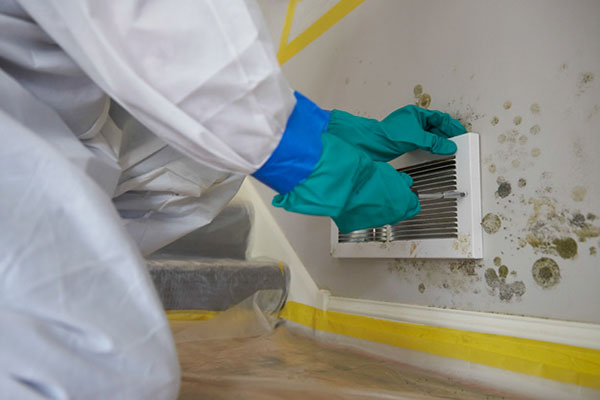Mold: it’s a word that can instantly cause concern for any homeowner or renter. Fungal and mold spores are a common occurrence in both indoor and outdoor areas. There are certain fungi and mold that are linked with indoor environments, specifically in warm and damp conditions. Often unseen but with a pervasive presence, mold is not just an unsightly issue—it can also have significant impacts on indoor air quality and health.
Mold indoors is primarily caused by excessive moisture and inadequate ventilation. Here are some of the common factors that contribute to indoor mold growth:
- Humidity. High humidity levels, often above 60%, can create an environment conducive to mold growth. This can be due to external weather conditions, especially in hot and humid climates, or internal sources like humidifiers.
- Water Leaks. Leaks from pipes, roofs, windows, or any area that allows water intrusion can lead to mold. Often, these leaks are hidden within walls or under floors, creating a perfect breeding ground for mold.
- Condensation. Cold surfaces can create condensation, which provides the moisture mold needs to grow. This is often seen on metal pipes, concrete floors, and windows.
- Poor Ventilation. Inadequate ventilation traps moisture indoors. Areas like bathrooms, kitchens, and laundry rooms, where there is a lot of moisture, are particularly susceptible if they’re not well-ventilated.
- Flooding. Homes that have experienced flooding are at high risk for mold growth, especially if the water isn’t promptly and thoroughly removed.
- Wet Materials. Building materials, upholstery, or household items that remain wet for extended periods (over 24 to 48 hours) can become moldy. This includes wet carpets, wood, drywall, and fabric.
- Damp Basements or Crawl Spaces. These areas are prone to dampness due to their proximity to the ground, making them common sites for mold growth.
It’s important to control moisture levels and ensure good air circulation to prevent mold. Regularly checking for leaks, using dehumidifiers, and maintaining good airflow are key steps in preventing mold indoors.
Health Risks of Mold
Some people are highly sensitive to mold and fungi. Some can suffer from nasal or eye irritation. Others feel nausea, sneezing, nose bleeding, respiratory infections, and skin irritation. Children and some individuals with severe allergies can develop serious medical problems. People who are suffering from chronic lung illnesses, like obstructive lung disease, may develop mold infections in their lungs (Centers for Disease Control and Prevention).
Our Mold Remediation Service at ServiceMaster of the Upstate

If you suspect that your home or establishment is suffering from mold problems, our mold remediation company in South Carolina will be able to solve your problem. ServiceMaster of the Upstate can help you inspect and assess your property.
ServiceMaster of the Upstate is a mold remediation company in Greenville, SC that can offer you good services. If mold is found, we have the experience, equipment, and expertise to handle the situation. We can help you get mold testing to determine whether your building has mold. Mold inspection involves gathering surface samples and monitoring possible airborne spore levels. We also make any recommendations about the level of risk and actions you could take to control exposure.
To request an inspection or schedule an appointment, call ServiceMaster of the Upstate at (864) 310-7891 or contact us online. We are available to answer your call 24 hours a day, 7 days a week.







